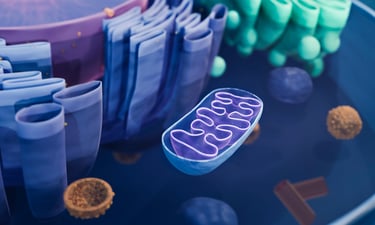eStoreRx™
Online Supplement Dispensary
eStoreRx™ is an easy direct-to-patient ordering & fulfilment program for lifelong wellness.
For over 40 years, Biotics Research Corporation has revolutionized the nutritional supplement industry by utilizing “The Best of Science and Nature”. Combining nature’s principles with scientific ingenuity, our products magnify the nutritional
eStoreRx™ is an easy direct-to-patient ordering & fulfilment program for lifelong wellness.
Biotics Research is proud to expand our commitment to education with the Wellness Unfiltered Pro Podcast. Each episode delves into key health topics and the clinical applications of our premier products. Through candid, insightful conversations, our team offers practical guidance to keep you informed and empowered as a healthcare professional.
December 18 2025
Low-carbohydrate diets are perhaps most popular for weight loss, but the strictest form of carbohydrate restriction – a ketogenic diet – has been show...
 Results of an experimental animal study clarifying the role of mitochondria in the processing and transport of dietary lipids were recently published in Nature. The gastrointestinal consequences of impaired mitochondrial function are not well understood, and this study was done to shed light on the specific role played by mitochondria in lipid processing, potentially leading to more targeted human interventions.
Results of an experimental animal study clarifying the role of mitochondria in the processing and transport of dietary lipids were recently published in Nature. The gastrointestinal consequences of impaired mitochondrial function are not well understood, and this study was done to shed light on the specific role played by mitochondria in lipid processing, potentially leading to more targeted human interventions.
Breeding of mice lacking the DARS2 gene, specifically in intestinal epithelial cells (IECs, the cells primarily responsible for nutrient absorption), produced animals that lacked mitochondrial respiratory complexes and could not survive beyond 4 weeks. The DARS2 gene codes for mitochondrial aspartyl-tRNA synthetase 2, an enzyme critical to the synthesis of multiple mitochondrial proteins, with a deficit causing substantial mitochondrial dysfunction. The IECs accumulated lipids into large droplets, determined to be of a dietary origin, with additional evidence indicating that the transport of dietary lipids was impaired in these mice. Proteomic and metabolomic analyses were also performed, indicating a downregulation of lipid biosynthesis as well as a decrease in chylomicron production.
Further experiments included more specific changes, targeting specific units involved in oxidative phosphorylation for deletion, including SDHA (mitochondrial complex II) or COX10 (complex IV), again only in IECs. Both deletions resulted in the accumulation of large lipid droplets without some of the broader deficits observed in DARS2 knock-out mice.
These and additional experiments suggest that mitochondria play a key role in either chylomicron formation or the movement of chylomicrons from the endoplasmic reticulum to the plasma membrane. Mitochondrial dysfunction within IECs thus leads to the accumulation of lipids within these cells. As noted above, the GI impact of mitochondrial dysfunction in humans is not well recognized, though symptoms are a frequent consequence, and may include low appetite, vomiting, constipation, and diarrhea.
Submit this form and you'll receive our latest news and updates.
While the precise pathogenesis of Alzheimer’s disease remains a mystery, it’s hard to ignore that dietary and lifestyle ...
Learn moreA recent study has provided a comprehensive analysis of the relationship between diet and life expectancy. The scientist...
Learn more
*These statements have not been evaluated by the Food and Drug Administration. This product has not intended to diagnose, treat, cure, or prevent any disease.
Proposition 65 Warning
© 2025 Biotics Research Corporation - All Rights Reserved
Submit your comment